PHILLIPSTON, Mass. —Where the average person may see a weed-laden sidewalk or an overgrown lot, environmental consultant Lauren Roy sees endless possibilities.
Roy, 58, takes people on expeditions around their homes, cities and town centers, where she points out oft-ignored or vilified vegetation such as sumac, Japanese knotweed and curly dock. These plants can be turned into spice, juice and flour. She even has permission from the mayors of Fitchburg, Leominster and Gardner to forage for edible foods in the cities’ green spaces, which include abandoned lots and sides of the street.
“A lot of people don’t think you can forage in the city or that there’s anything edible here, but there is,” said Roy, a Phillipston resident and author of the book “The Modern Pioneer: An Almanac of Natural Living.” “It’s amazing to me that everything to nourish us, heal us and entertain us is right outside in our backyard.”
Roy’s hot spots include the streets heading toward BJ’s in Leominster and the empty lot next to The Boulder bar in Fitchburg, where she has found dozens of edible or medicinal plants such as grapes, raspberries, curly dock, sumac and dandelions.
“I found all these plants growing in this empty lot and I thought, ‘why can’t we have a foraging park?’” said Roy. “There are community gardens where people can go and grow their vegetables, but if there is a foraging park and people understood what those plants could do for them, people could go and get food. That would help feed the homeless.”
Roy says she doesn’t understand why people are grossed out by the possibility of eating plants that are growing right outside their front door. She has no qualms about adding plants she pulled from her neighbor’s yard or her driveway to her family’s dinner.
“There’s a guy that lets me forage in his yard for knotweed,” said Roy.
According to New York Invasive Species Information, Japanese knotweed is a member of the buckwheat family that was introduced to the United States from Eastern Asia as an ornamental plant on estates in the late 1880s. The plant, which is bamboo-like in appearance, can grow up to 15 feet tall. It is deemed invasive because it spreads rapidly, creating monocultures that can threaten native plant communities.
However, Roy has taken a stand in defending knotweed, which she uses to make jelly and juice, among other things.
“I am getting to the end of my rope defending it,” she said. “People are nuts about this plant, it’s Japanese knotweed. Everybody hates it, everybody wants to know how to eradicate it and I say eat it, drink it. You can use the little stems like rhubarb and asparagus.”

Left: jelly made from Japanese knotweed. Right: jelly made from violets. Photo by Genevieve DiNatale.
Roy adds that the health benefits of knotweed include lowering blood pressure, blood sugar and cholesterol. Some believe it treats cancer.
“It is literally the fountain of youth,” she added.
Other plants that Roy cultivates from her surroundings are:
- Curly dock: Roy uses the flowers as flour and the baby leaves as spinach. She said you can’t eat the big leaves because they have oxalic acid in them which can make you very ill. “The root is medicinal,” added Roy. “It helps clean your gallbladder and liver, helping get that all clean and shiny.’”
- Acorns: She collects and dries acorns which she makes into flour that she uses to make muffins.
- Dandelion: Roy said you can make jelly, fritters with the flowers, and use the leaves as salad greens. She added that dandelion root is a diuretic, helping to get rid of extra water weight when it’s humid.
- Yarrow: Can be used for fever, the common cold, and gastrointestinal issues.
- Mullein: Can be used for ailments such as pneumonia, cough, ear aches and bronchitis.
- Sumac: Roy uses red sumac to make tea and spice. The lemony spice is popular in Mediterranean cooking. For those wondering, the white sumac is poisonous, but the red is edible. According to Roy, “Don’t eat the white — think white angel wings. The red is yummy, tastes like lemonade and is full of Vitamin C.”
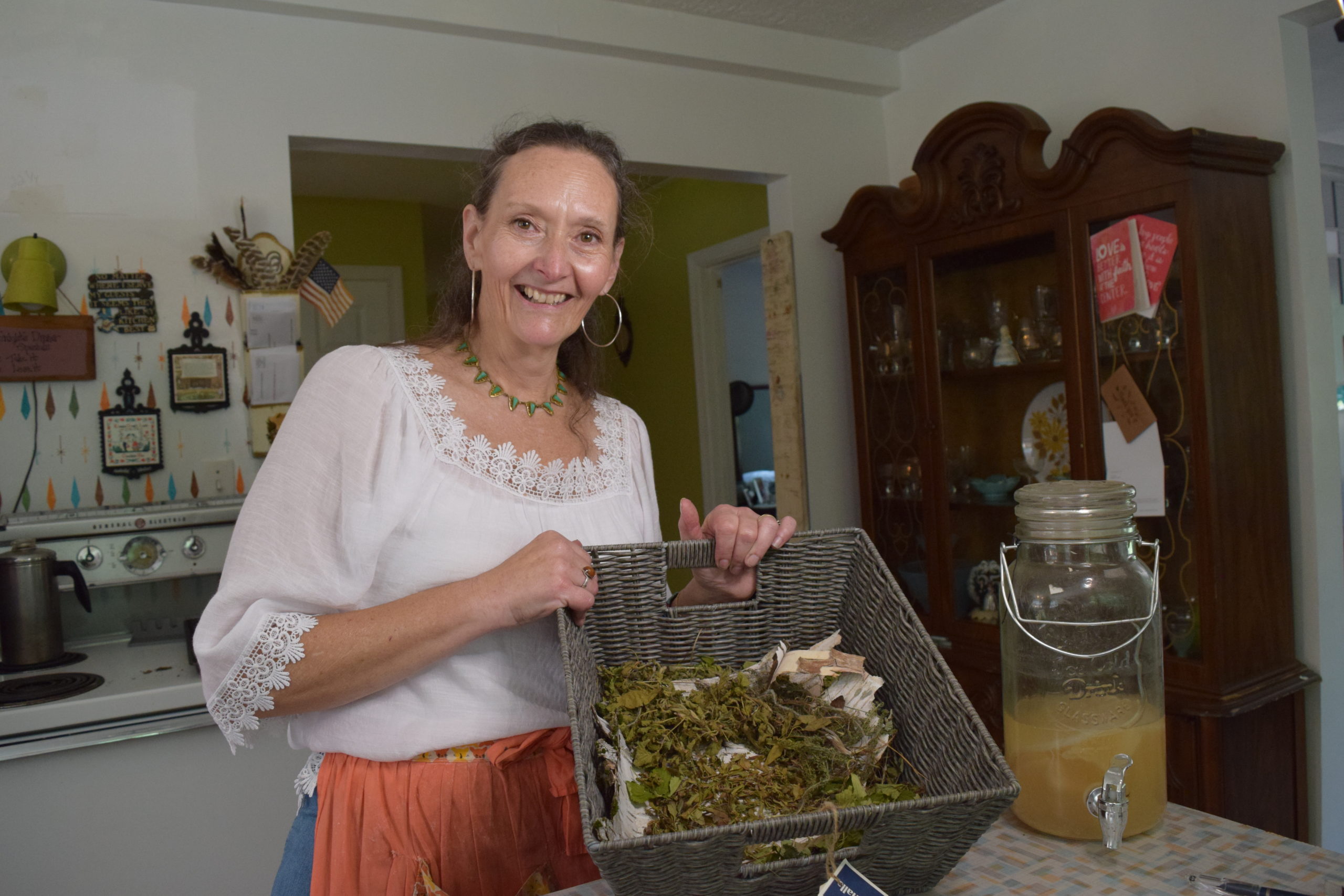
Lauren Roy holds a basket of strawberry leaf, raspberry leaf, blueberry leaf, yarrow and mullein in her Phillipston, Mass. home. Photo by Genevieve DiNatale.
As always, forage with care. Never consume an item you cannot identify. For those interested in Roy’s work please visit her Facebook page at @ModernPioneer1.


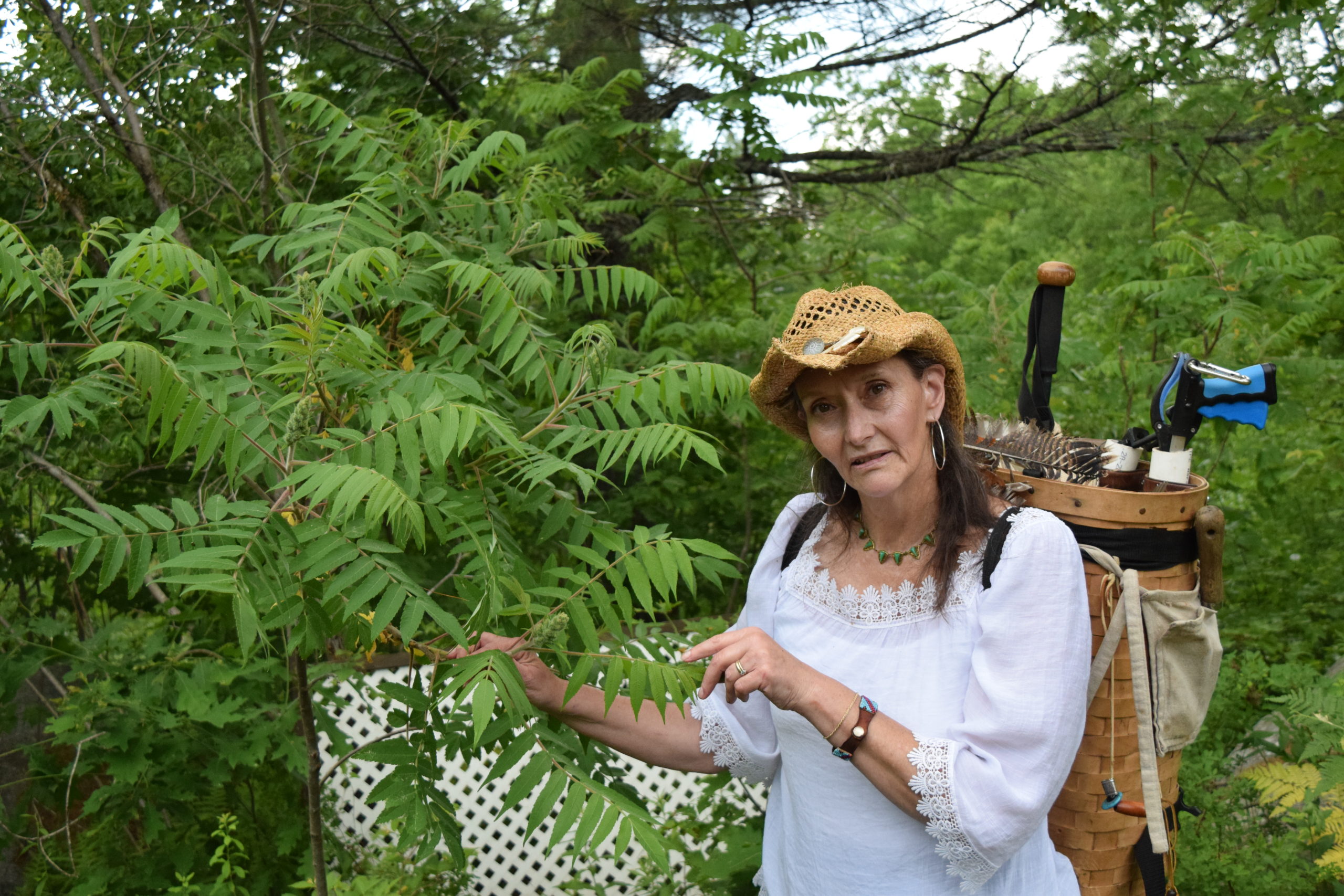

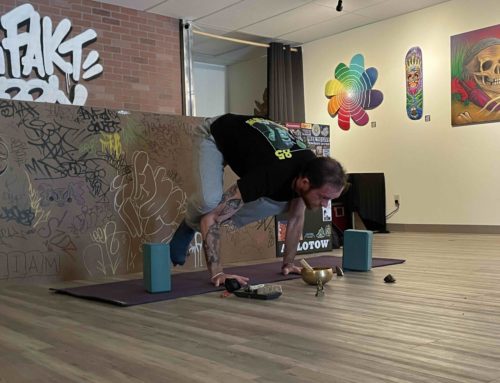
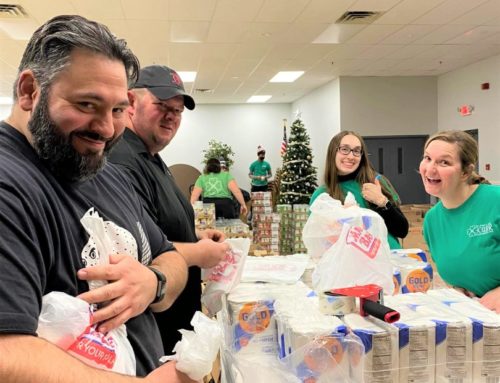
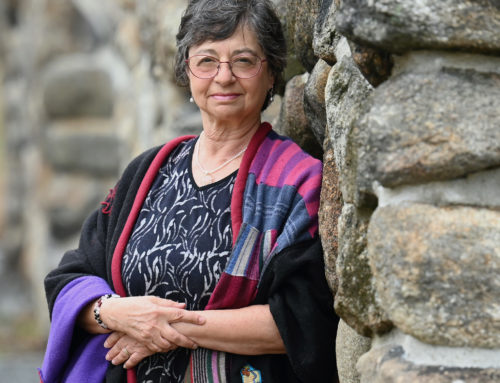
Leave A Comment